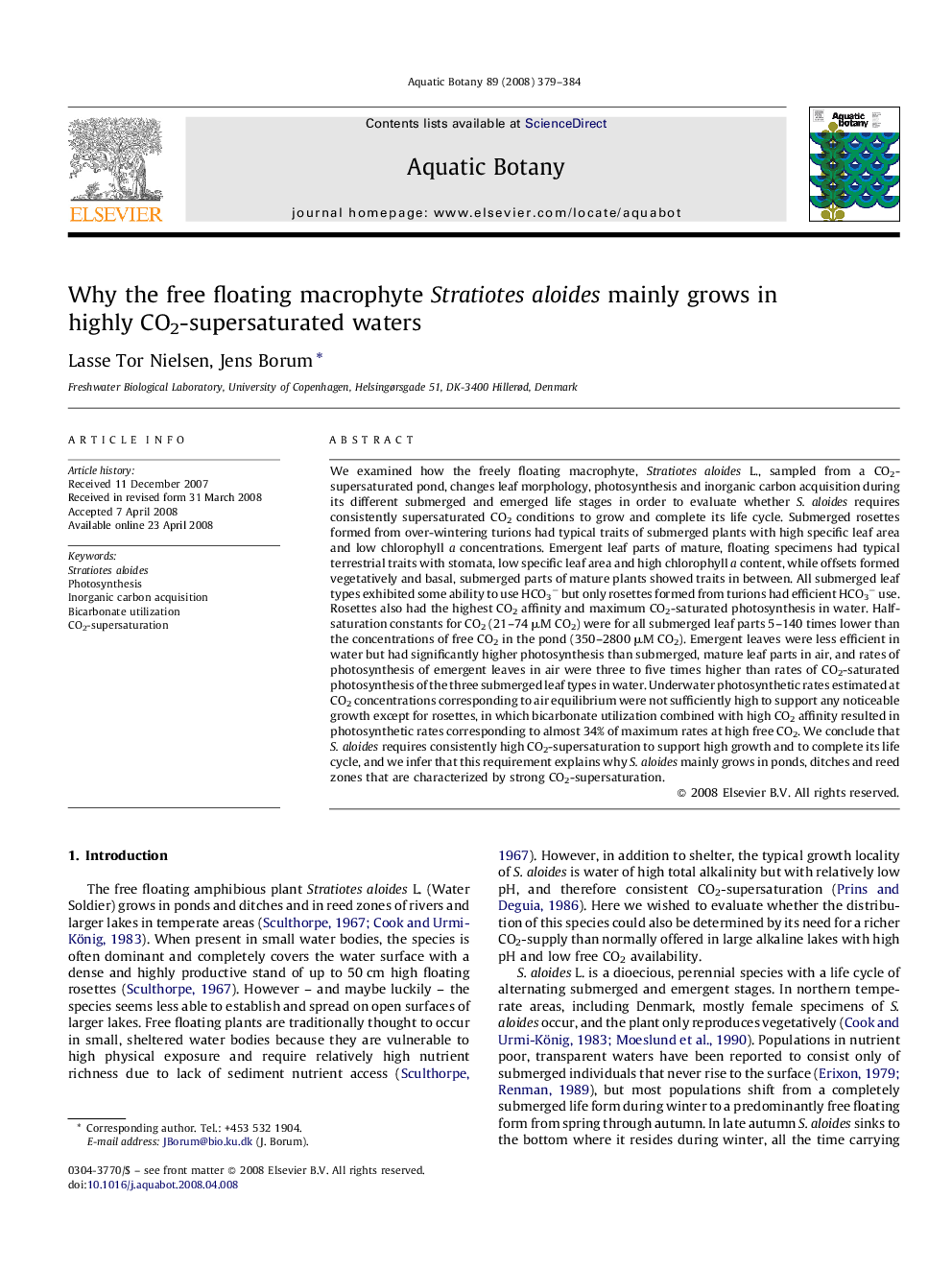| کد مقاله | کد نشریه | سال انتشار | مقاله انگلیسی | نسخه تمام متن |
|---|---|---|---|---|
| 4528386 | 1324304 | 2008 | 6 صفحه PDF | دانلود رایگان |

We examined how the freely floating macrophyte, Stratiotes aloides L., sampled from a CO2-supersaturated pond, changes leaf morphology, photosynthesis and inorganic carbon acquisition during its different submerged and emerged life stages in order to evaluate whether S. aloides requires consistently supersaturated CO2 conditions to grow and complete its life cycle. Submerged rosettes formed from over-wintering turions had typical traits of submerged plants with high specific leaf area and low chlorophyll a concentrations. Emergent leaf parts of mature, floating specimens had typical terrestrial traits with stomata, low specific leaf area and high chlorophyll a content, while offsets formed vegetatively and basal, submerged parts of mature plants showed traits in between. All submerged leaf types exhibited some ability to use HCO3− but only rosettes formed from turions had efficient HCO3− use. Rosettes also had the highest CO2 affinity and maximum CO2-saturated photosynthesis in water. Half-saturation constants for CO2 (21–74 μM CO2) were for all submerged leaf parts 5–140 times lower than the concentrations of free CO2 in the pond (350–2800 μM CO2). Emergent leaves were less efficient in water but had significantly higher photosynthesis than submerged, mature leaf parts in air, and rates of photosynthesis of emergent leaves in air were three to five times higher than rates of CO2-saturated photosynthesis of the three submerged leaf types in water. Underwater photosynthetic rates estimated at CO2 concentrations corresponding to air equilibrium were not sufficiently high to support any noticeable growth except for rosettes, in which bicarbonate utilization combined with high CO2 affinity resulted in photosynthetic rates corresponding to almost 34% of maximum rates at high free CO2. We conclude that S. aloides requires consistently high CO2-supersaturation to support high growth and to complete its life cycle, and we infer that this requirement explains why S. aloides mainly grows in ponds, ditches and reed zones that are characterized by strong CO2-supersaturation.
Journal: Aquatic Botany - Volume 89, Issue 4, November 2008, Pages 379–384